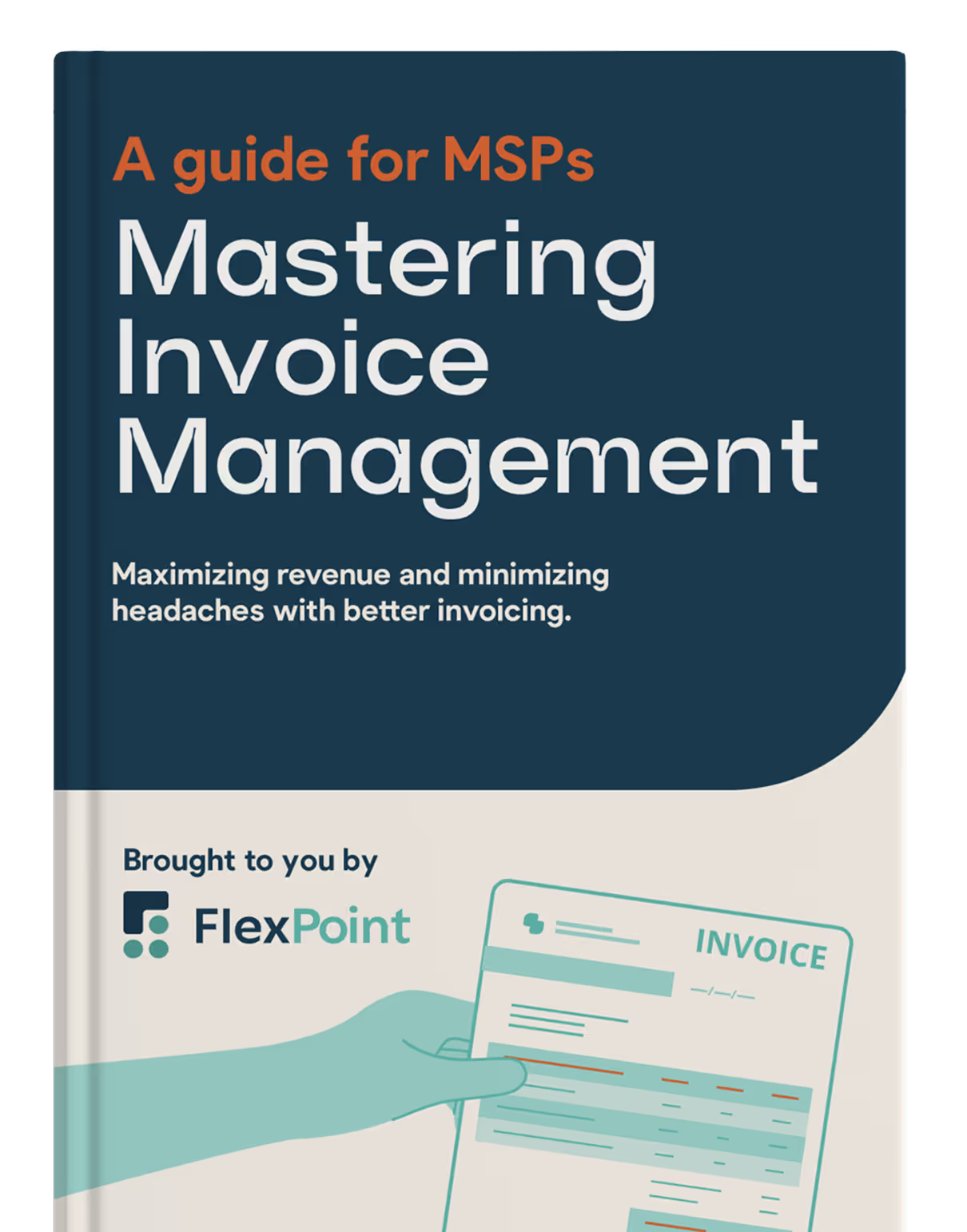From Manual to Digital: How to Transform Your MSP Billing
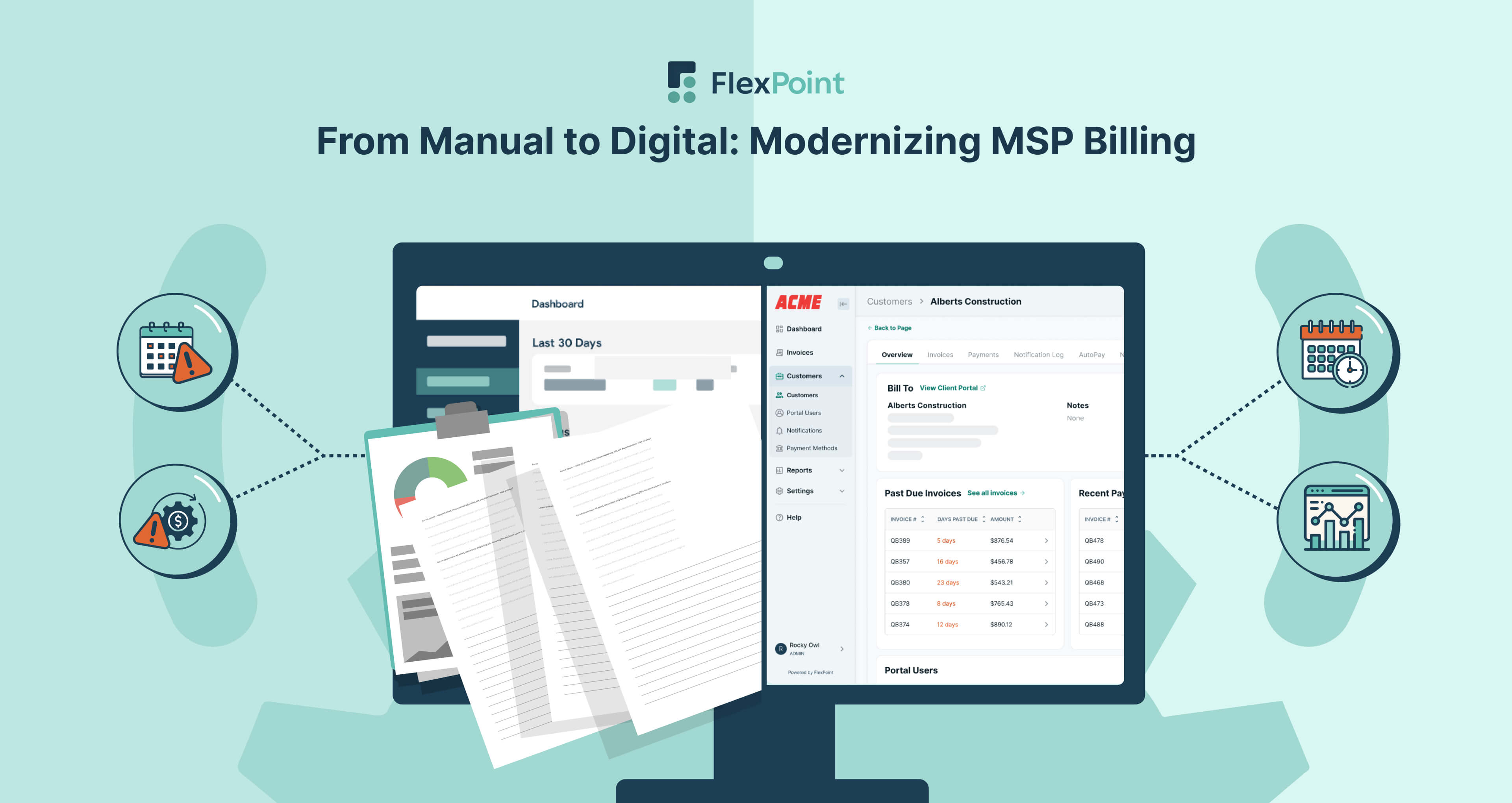
According to MSP Insights, 70% of MSPs rely on manual billing processes that, on average, take around nine hours per week. Manual billing workflows require your team to manage spreadsheets and track time logs to create invoices, which are then sent via email.
Managing the demands of a growing client base and increasingly complex service offerings can be challenging with manual billing processes. Reliance on spreadsheets and paper-based processes often results in errors or delays in invoice processing and payment collection. All of this can lead to client disputes and payment delays, impacting your MSP's cash flow.
Digital billing improves invoicing efficiency, minimizes errors, and accelerates payment processes. Automated billing systems integrate seamlessly with Professional Services Automation (PSA) tools, such as ConnectWise, Autotask, HaloPSA, or SuperOps, to track services and ensure precise, real-time billing.
Digital and automated billing also offers scalability, allowing businesses to manage a growing client base without increasing operational burden. It helps MSPs eliminate manual inefficiencies and payment challenges, and, as a benefit, can help enhance financial oversight and concentrate on delivering exceptional service.
In this article, we will discuss the challenges of manual billing and the benefits of transitioning to a digital billing system for Managed Service Providers (MSPs). We will also list strategies to modernize your billing processes as you scale your MSP operations.
{{toc}}
The Hidden Costs of Manual Billing for MSPs

Manual billing silently drains your MSP's revenue by creating inefficiencies that impact your bottom line and slow your MSP's growth. Manual billing processes rely heavily on human effort, like data entry into spreadsheets, extracting time logs from PSA tools, verifying contract terms, creating invoices individually, and manually reconciling payment data.
Manual billing for MSPs with variable models, such as usage-based or recurring plans, can be complex and prone to payment errors.
Manually gathering fragmented data from various sources, verifying unique terms of each client’s contracts, and managing inconsistent invoice formats can lead to delayed billing cycles and payment collection.
According to Sigitek, 12.5% of manually processed invoices contain errors. These mistakes occur due to unbilled services, missed recurring invoices, or untracked billable hours, resulting in delayed payments and client disputes that can damage relationships. Relying on spreadsheets and manual processes is time-consuming and costly, leading to higher workloads, billing errors, and missed revenue opportunities.
Digital billing eliminates these hidden costs and inefficiencies. Automated billing systems generate accurate invoices and send them promptly to maintain a consistent billing cycle. These reduce errors by seamlessly integrating with PSA software and time-tracking tools to ensure that every billable item is captured. According to Rev.io, automation reduces the average payment processing time to five days. It improves cash flow through automated reminders and integrated payment gateways.
Automated billing systems maintain detailed logs of all billing activities, which can be accessed at any time for record-keeping and auditing purposes. Transparency helps build client trust, as it enables them to access accurate and timely information about their invoices. These systems also improve reporting accuracy with real-time reconciliation. Accurate insights into revenue and outstanding invoices enable MSPs to make informed decisions that will enhance their offerings.
{{ebook-cta}}
5 Strategies and Best Practices for Transitioning from Manual to Digital Billing
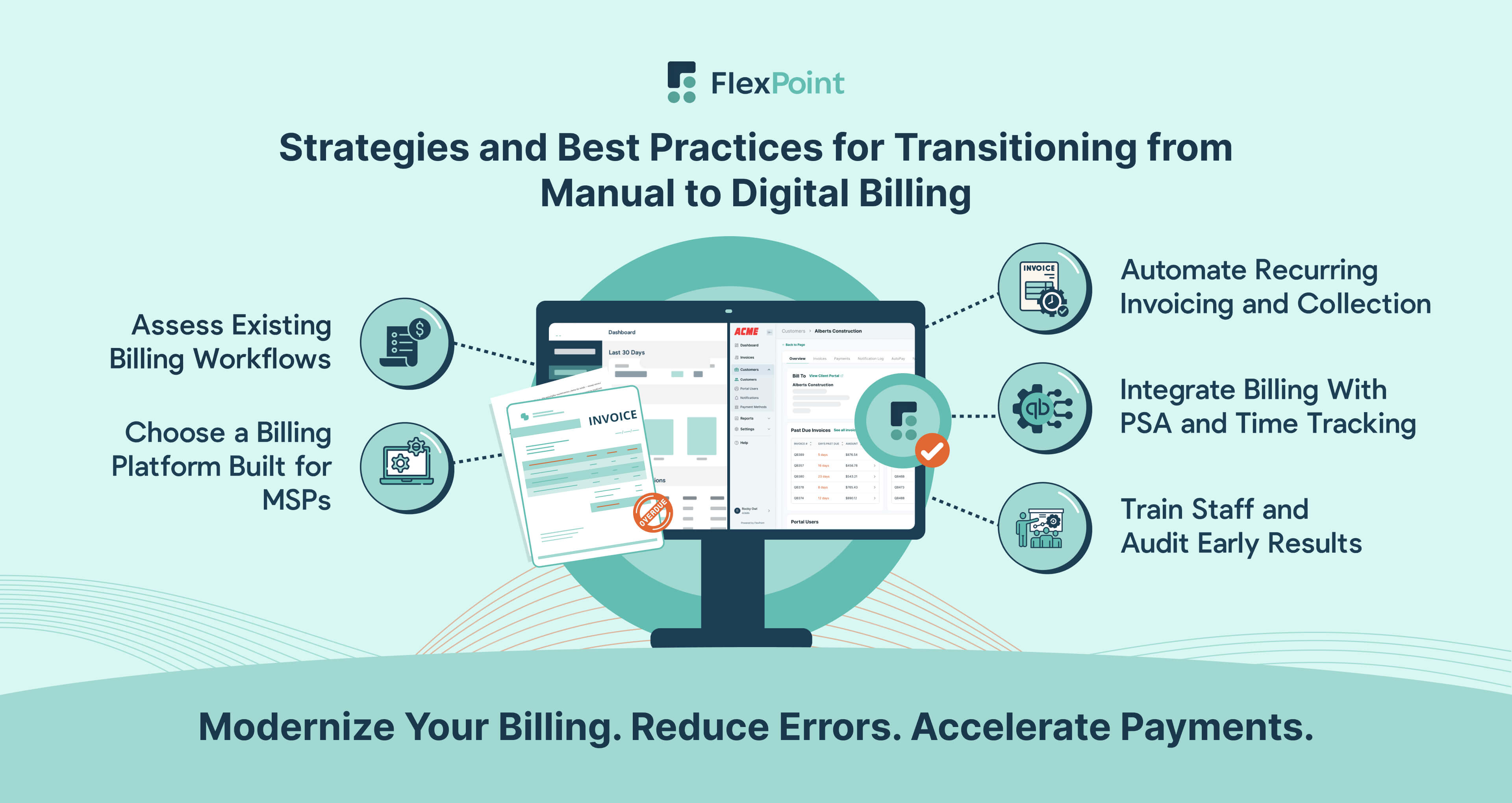
Shifting from manual to digital billing is about transforming how your MSP manages its billing operations, receives payments, and handles cash flow. According to Ardent Partners, automated invoice processing is 81% faster, and digital systems reduce costs by 79.5% compared to traditional manual methods.
Here, we discuss proven strategies and best practices that help MSP owners and financial teams transition smoothly from manual to digital billing practices.
1. Assess Current Billing Workflows and Pain Points
Before transitioning to digital billing, you must evaluate your MSP's current processes. Begin by mapping out each step of your billing workflows in detail.
You may need to determine the following:
- Where is client payment and contract data stored?
- How are service hours tracked?
- How are invoices generated?
- How are payments processed?
MSPs often rely on spreadsheets, emails, or paper systems, which can lead to delays, errors, and inconsistencies in data management.
Identifying bottlenecks, such as delays in gathering data from technicians, errors in manual calculations, inconsistencies in data entry, missed billable hours, incorrect client rates, or omitted one-time services, will help you pinpoint areas where digital billing solutions can improve efficiency and accuracy.
For example, an Idaho-based MSP, Limetree Labs, spent hours each week manually pulling reports, tracking down billable items across multiple systems, creating invoices, and emailing payment links. Even while using QuickBooks, the manual elements of the billing process led to inconsistencies, a high risk of data breach, and missed revenue.
After implementing FlexPoint, the MSP automated its billing workflows by integrating the platform with its existing PSA tools, streamlining invoice generation, and securely collecting payments through a branded client portal. The switch reduced billing time by over 50%, boosting the MSPs' operational efficiency by 30%.
In addition, FlexPoint’s branded client portal features improved billing transparency and AutoPay, resulting in improved client retention and millions of dollars in savings for the MSP.
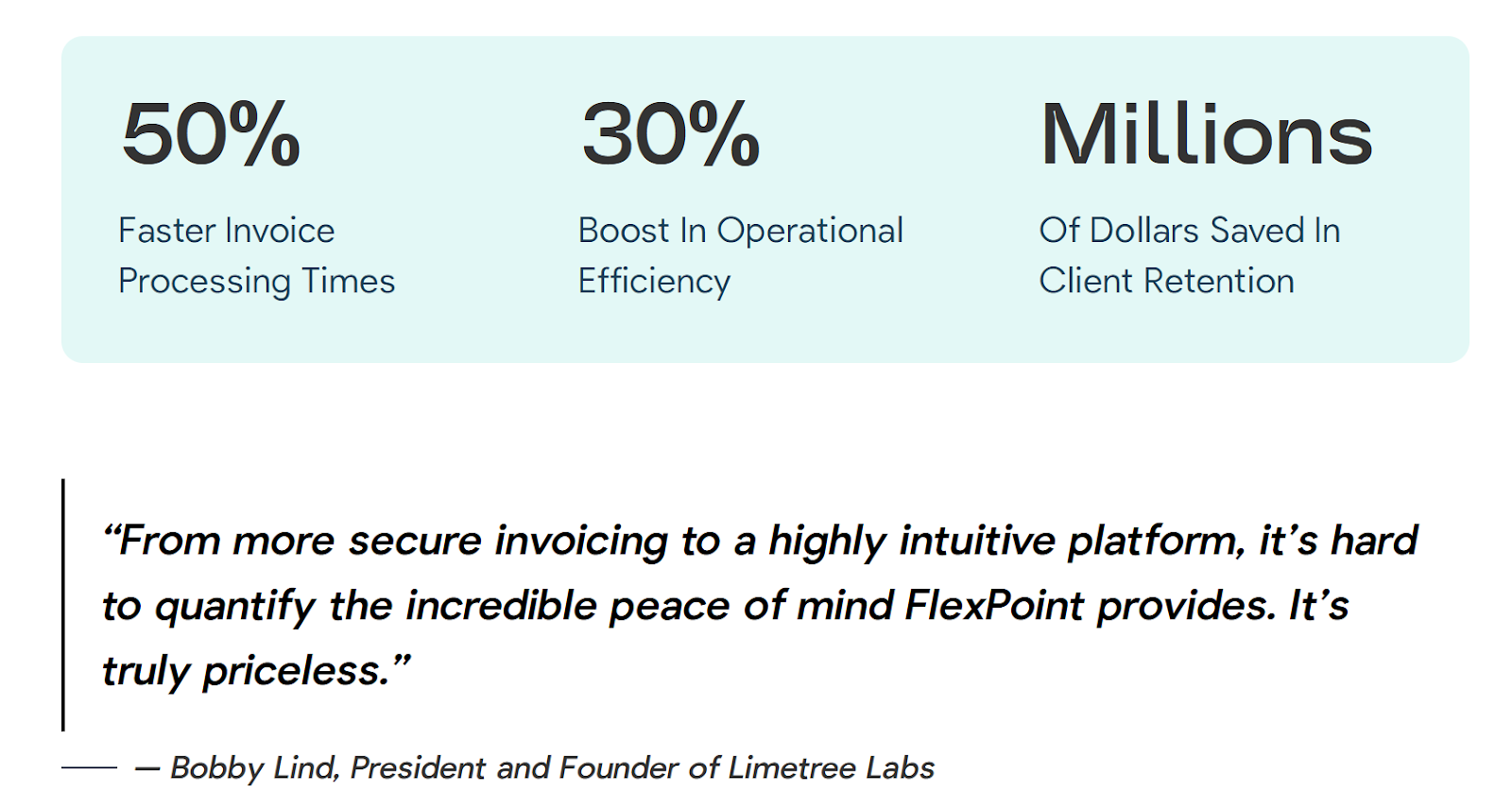
2. Select a Digital Billing Platform Built for MSPs
Not all billing platforms are suitable for managed service providers (MSPs). Generic invoicing tools may lack key features for managing recurring billing, complex pricing options, or integrations with PSA tools.
MSPs require a purpose-built solution to streamline operations and ensure accuracy. Look for a platform that offers:
- Recurring and usage-based billing options to handle diverse services and pricing structures.
- Automatic invoice generation based on service logs, contract terms, or real-time usage data.
- Seamless integration with PSA systems, accounting software, and payment gateways to synchronize data and eliminate manual input.
- Support for complex pricing models, including tiered pricing, bundled services, and client-specific rules.
- Branded client self-service portals for clients to access invoices, track usage, and make payments with ease.
- Advanced reporting and analytics to monitor billing cycles, identify revenue trends, and simplify reconciliation.
- Built-in compliance and security features to meet standards like PCI DSS and SAQ-A for safe and transparent billing.
- Flexible billing options to adapt to various client needs based on contract types and service levels.
3. Automate Recurring Invoicing and Payment Collection
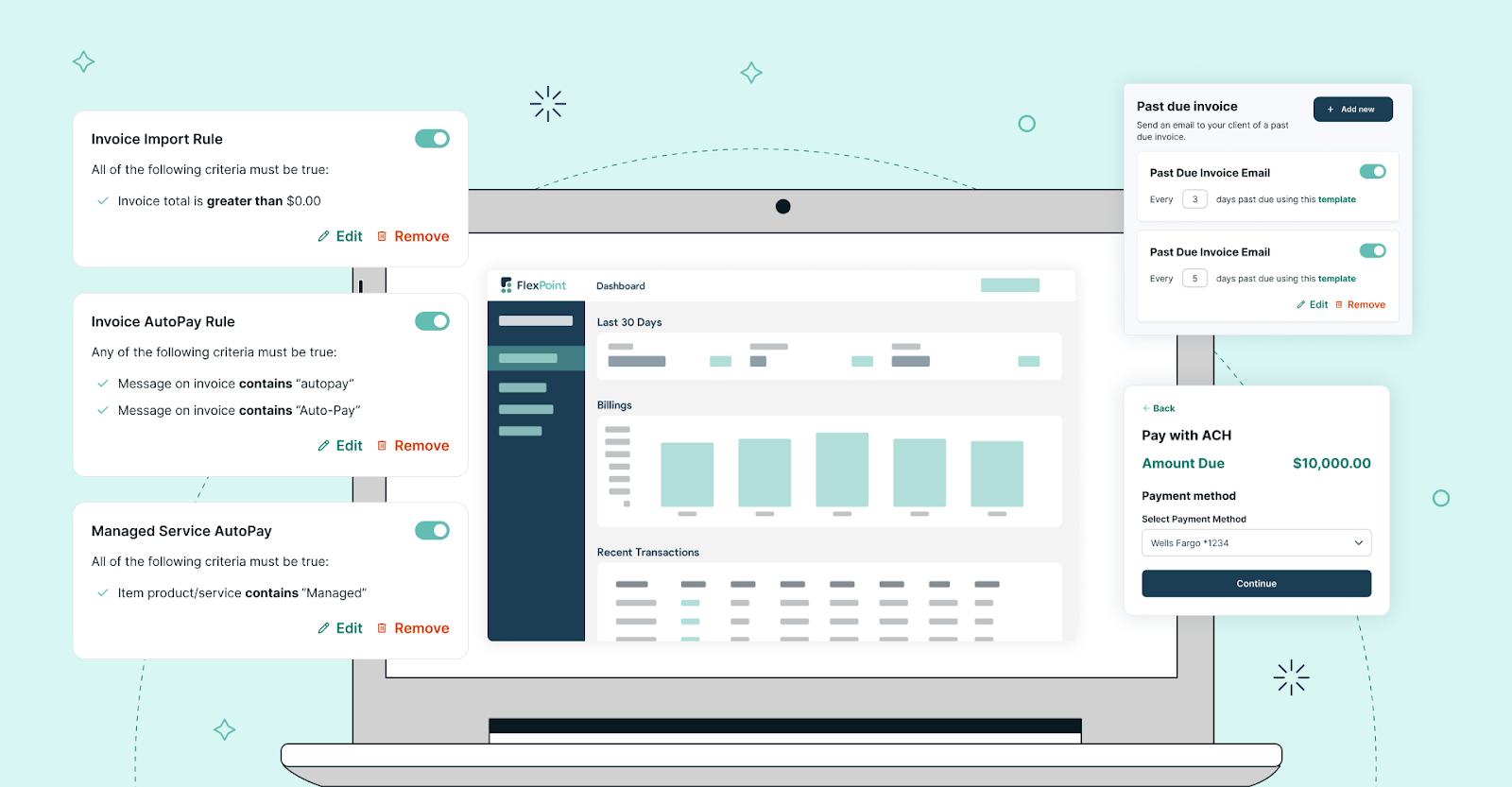
Switching from manual to digital billing requires automating repetitive manual tasks. According to Ardent Partners, switching to automated processes lowers the invoice exception rate by 59%.
Features such as generating recurring invoices, sending payment reminders, and collecting payments online help reduce errors, streamline collections, improve cash flow, and minimize administrative tasks.
The automated billing platform can be configured to generate invoices in real-time based on actions like ticket closures or contract milestones.
Automation helps MSPs avoid missed billable items or billing errors by integrating with PSA tools and time trackers to capture overages in real-time. Simplified billing reduces errors, ensuring accurate invoices and timely payments that strengthen client trust.
For example, TAZ Networks, a Brighton-based MSP, faced persistent challenges with manual invoicing and legacy systems. The team spent hours each month creating invoices, chasing missed charges, and following up on overdue payments. It slowed cash flow, with past-due invoices averaging six to eight months in arrears.
TAZ Networks fully automated its recurring invoicing process by switching to FlexPoint. The automated billing platform reduced the MSPs' invoicing time by 30% and saved 3 days per month. In addition, the passwordless client portal with the AutoPay option reduced AR aging by 4 times.
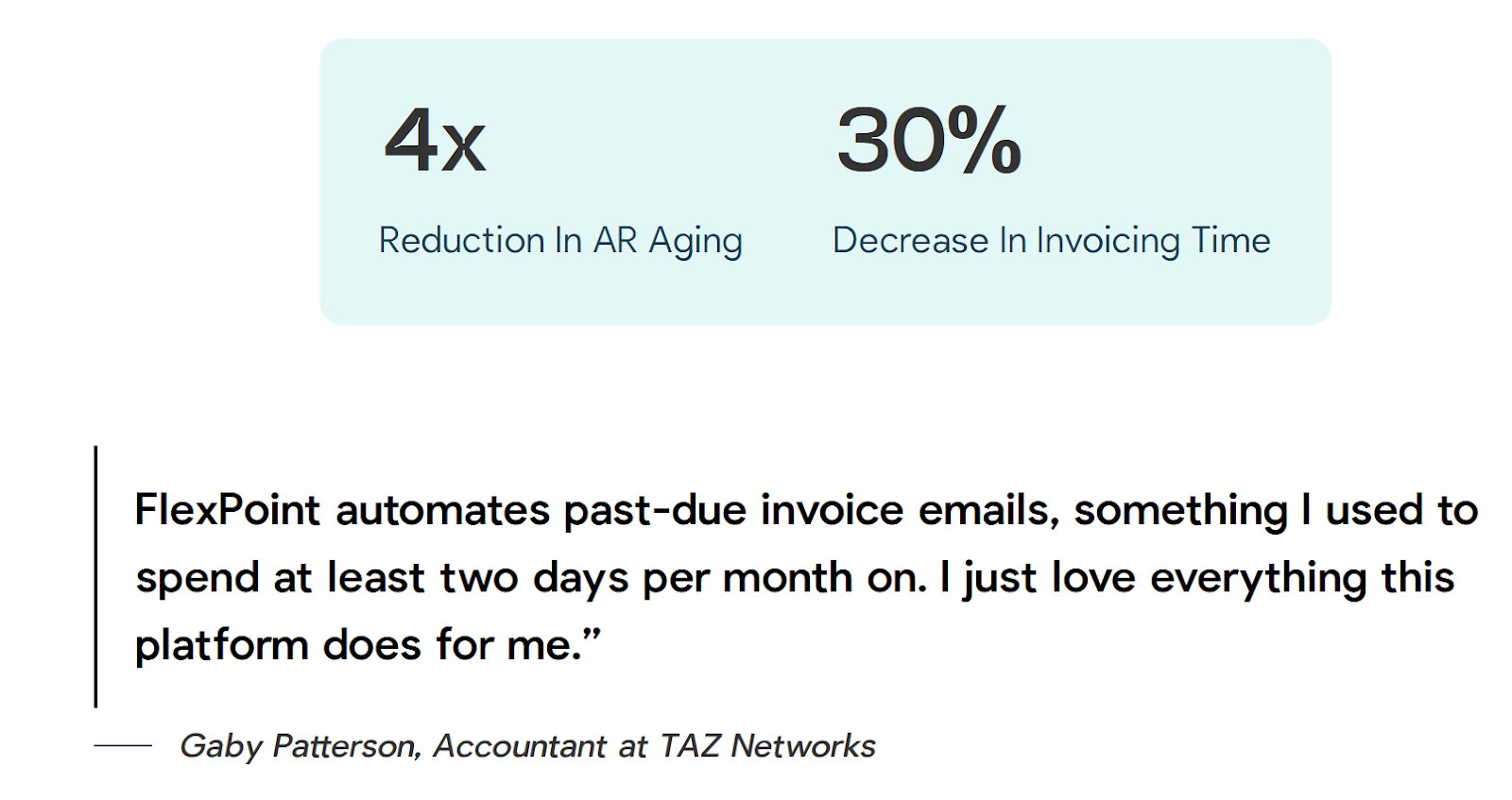
4. Integrate Billing with Time Tracking and Service Management
According to BluLogix, fragmented systems and outdated workflows can result in annual revenue losses of 5–15%. For digital billing to work smoothly, it must connect directly with your MSP’s service delivery systems. Your billing system should automatically gather data from your PSA platform.
Digital billing without these integrations involves time-consuming and inefficient manual data transfers. Fully integrated billing systems that generate invoices using real-time service data provide clients with a clear breakdown of the services delivered and the corresponding charges.
For example, when a technician logs hours in a ticketing system, the data should automatically flow to your billing platform. This reduces manual data entry and errors, helping to generate accurate invoices. Connected billing workflows enhance transparency, strengthen client trust, and streamline cash flow.
5. Train Staff and Audit Results During the Transition
Transitioning to a digital billing platform requires collaboration and understanding from your team. Provide comprehensive training to your finance and service staff to shorten the learning curve. You should highlight how the new system makes their jobs easier and reduces their workload, helping to smooth the transition.
Schedule regular training sessions to build confidence in your team. Provide clear and easy-to-access guides for your workflows.
Start with phased rollouts, testing with a few clients before full deployment to refine the process. Monitor key metrics such as invoice accuracy, payment collection timelines, and client feedback to fine-tune your processes.
Conclusion: Boosting Efficiency and Accuracy with Digital MSP Billing
Manual billing is a costly and inefficient trap for Managed Service Providers (MSPs). Relying on spreadsheets, disconnected tools, or outdated workflows results in errors, delays, and lost revenue. These manual methods create administrative chaos, slowing cash flow, frustrating clients, and burdening teams with repetitive tasks. MSPs using these outdated approaches risk falling behind their competitors, who have adopted digital billing solutions.
Switching to digital billing transforms your MSP's operations. Automated billing systems eliminate errors, speed up payment collection, and provide real-time insights. By integrating with PSA software and time-tracking tools, digital billing systems ensure that every service is billed accurately and that recurring invoices are delivered on time. In addition, real-time reporting provides better financial control, allowing you to track revenue and identify issues instantly.
FlexPoint is a digital billing solution built for MSPs. The platform automates recurring invoices and usage-based billing, seamlessly integrating with PSA (such as ConnetWise, HaloPSA, Autotask, SuperOps) and accounting tools like QuickBooks Online, QuickBooks Desktop, or Xero.
FlexPoint converts manual billing processes into a streamlined payment collection workflow that tracks services, triggers invoices, and collects payments in one platform. The platform prevents revenue leakage and payment delays, helping improve your MSP’s bottom line and strengthening client relations.
Eliminate manual billing errors and streamline your MSP’s financial operations with FlexPoint.
Automate invoicing, reduce delays, and simplify payment tracking.
Schedule a demo to see how FlexPoint can modernize your billing process.
{{demo-cta}}
Additional FAQs: Manual to Digital Billing for MSPs
{{faq-section}}



